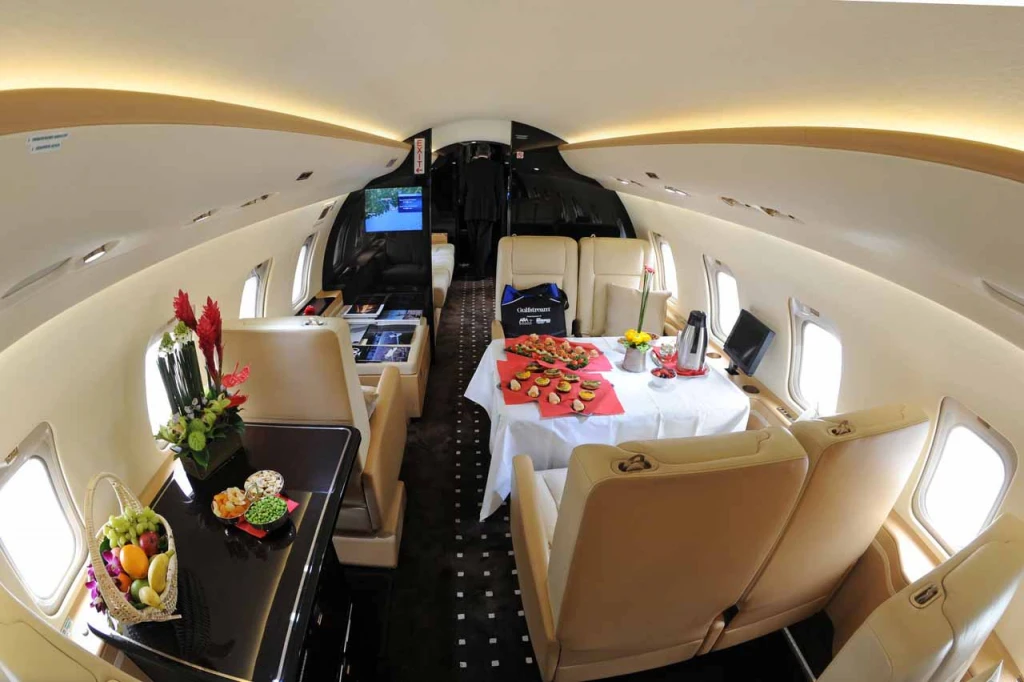Leesburg Executive Airport (JYO) situated on the outskirts of Washington DC is quickly becoming a popular executive airport in the region. Recently we found out that the airport is
Remote Tower Technology: what is it?
Leesburg Executive Airport (JYO) situated on the outskirts of Washington DC is quickly becoming a popular executive airfield in the region. Recently we found out that they're planning on being the first to test remote tower technology in a non controlled airport in America. So we decided to interview Scott Coffman, the airport's Manager at JYO and also Shye Gilad, the CEO of ProJet Aviation, leading operator based at JYO, regarding the scope and benefits of the remote air traffic tower test at Leesburg Executive:
PBJ: Please give us a brief overview of the Remote Tower Project.
Scott: Defense and security company Saab, the Virginia SATSLab, Inc. (VSATS) and the Leesburg Executive Airport are partnering to demonstrate and evaluate Saab remote tower technologies. During the summer of 2015, the partnership will demonstrate and evaluate the remote tower system for use at non-towered airports. The Virginia Department of Aviation is an advisory partner for the project.
For the demonstration, the partnership will deploy a number of Saab technologies in the building — high definition video cameras, pan-tilt-zoom (PTZ) camera, signal light gun (SLG) and microphones — that will provide data directly to a Remote Tower Center (RTC) and air traffic controllers.
The RTC will have multiple high-definition displays and two controller working positions with a command of voice communications, the cameras, and SLG. Data will be collected from the RTC, along with data from a Mobile Air Traffic Control Tower (MATCT) that will be deployed at the same time for safety redundancy and data comparison. FAA-certified Control Tower Operators will staff both the RTC and MATCT.
The Federal Aviation Administration is providing staff to conduct a safety evaluation of the technology for potential certification and deployment within the US.
PBJ: What are some of the advantages of using a Remote Tower opposed to conventional Air Traffic Tower?
Scott: Installation of the sensor suite and remote tower center typically cost much less than building a tower and also offers the possibility, in the future, of providing services to more than one airport from a single location.
PBJ: Why are more Remote Towers not in use currently at Non-ATC airports.
Scott: This technology product is relatively new and only recently has been successfully deployed in Europe.
PBJ: How will this project affect Leesburg and Loudoun County as a whole?
Scott: The Leesburg Executive Airport Commission and Leesburg Town Council have supported conducting the test program as a stepping stone toward permanent air traffic control services at the busy general aviation reliever airport. A permanent air traffic control tower at Leesburg would increase safety and the capacity of the airport to attract business.
PBJ: How would the project effect operators, aircraft and their operation based at Leesburg Airport?
Scott: During the active phase of the test program, the Leesburg Airport airspace will be controlled 12 hours each day. In addition to the remote tower controller working position, a physical temporary tower cab will also be staffed. All controllers will be experienced and certified by the FAA. The program goal is to provide identical ATC services as operators encounter at other towered airports.

PBJ: What are the advantages that a Remote Tower can bring to passengers and private aircraft owners using Leesburg Executive Airport?
Scott: Just as Loudoun County has seen significant population growth over the past decade, the amount of aviation activity at our airport has grown and exceeds the amount of activity at many towered airports. The 3 based flight schools, jet charter operators, and private aircraft owners have all provided favorable comments that air traffic control tower services will provide an increase in air safety, reduce delays, and improve coordination with Washington DC security.
Shye: The advantages of operating at a controlled field include an increased margin of safety and expedited IFR operations. The remote tower will provide more efficient service for owners and passengers alike.
PBJ: What do you hope to accomplish through the execution of this project within the Washington DC Metropolitan Area or Nationwide?
Scott: The project team seeks FAA approval of the system for wider deployment to improve the safety of aircraft operations at airports within the State of Virginia and the US.

PBJ: Why do you feel Leesburg Executive Airport is best suited for a project of this magnitude?
Scott: It was chosen by the Virginia Department of Aviation and Saab as an ideal location to demonstrate, test, and evaluate the system for use in the US. In addition to its close proximity to the evaluators at the FAA headquarters in DC, the airport sees over 100,000 take-off and landings per year helping evaluate the safety and capabilities of the system.
PBJ: Are Leesburg Airport, operators, aircraft, and crew ready for the changes that the Remote Tower will bring?
Shye: All professional pilots welcome the opportunity to operate at an air traffic controlled field. The changes should be a benefit to all local operators.
PBJ: What are your future goals, hopes, and aspirations in relation to the Remote Tower Project at Leesburg Executive Airport?
Shye: ProJet’s goal is to put Leesburg Executive Airport on the map as the destination of choice for private jet operators and charter travelers in the DC Metro Region, and the success of this program will certainly move us closer to reaching that goal. We are hopeful that the airport will make a smooth transition from a successful test period to permanent implementation of the remote tower at the airport.








